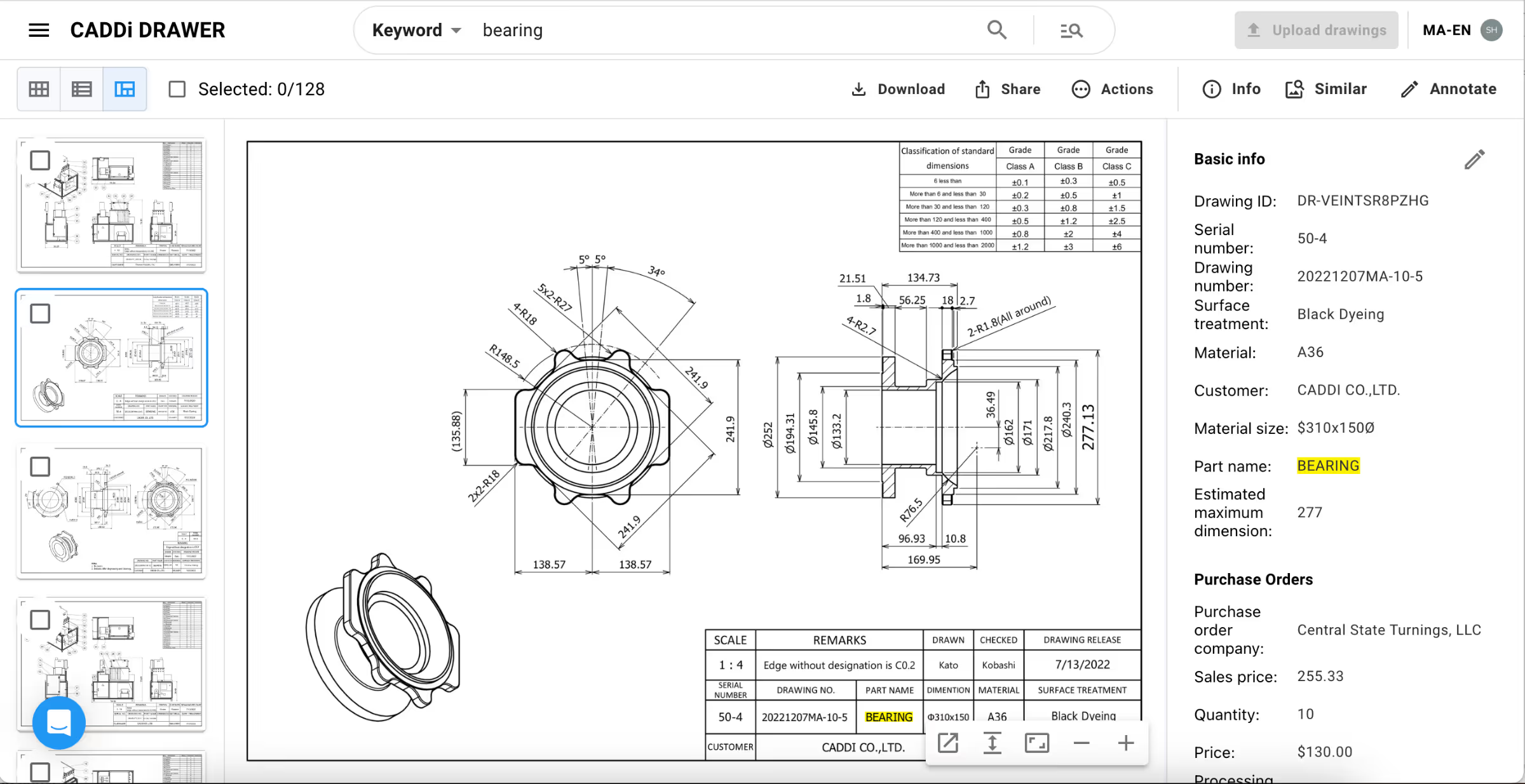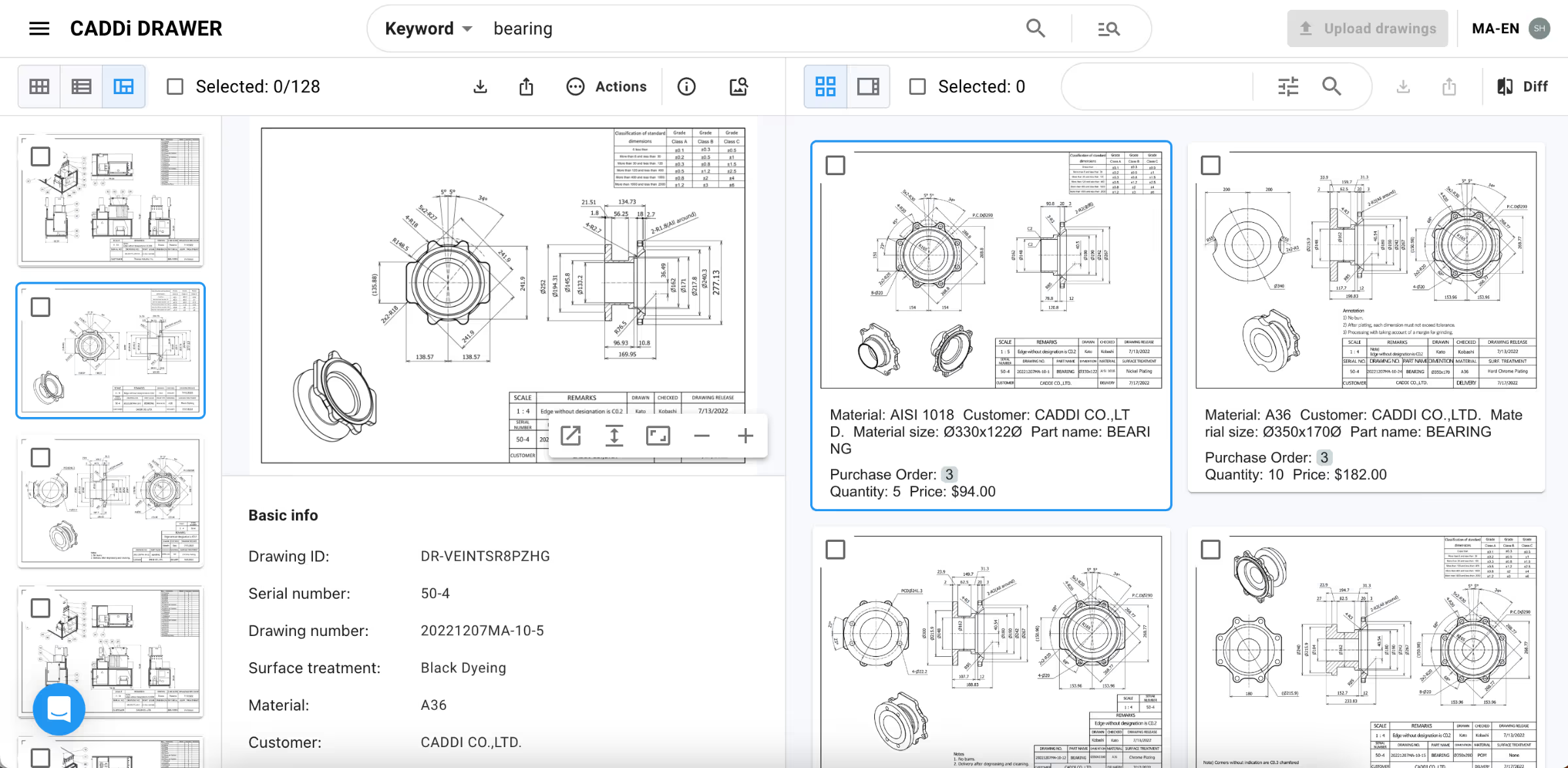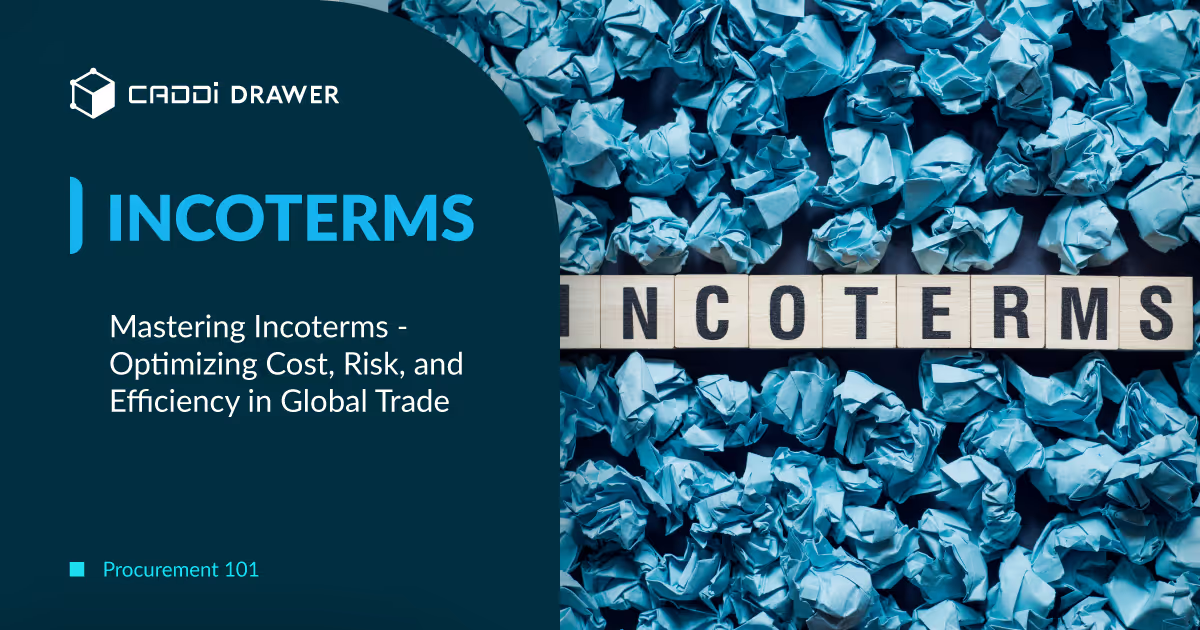Procurement 101: Competitive Bidding – Let’s evolve towards more fundamental initiatives

Table of Contents

Competitive bidding is a commonly employed method in procurement activities across various industries, including manufacturing. It often yields favorable results in terms of obtaining lower prices. Moreover, even without extensive knowledge on the buyer’s side, satisfactory outcomes are relatively achievable as long as market supply and demand dynamics and intercompany power balances are favorable. Hence, its frequent utilization is understandable.
However, merely engaging in competitive bidding without a strategic approach poses risks of gradually diminishing the competitiveness of the supply chain and the accumulation of knowledge within one’s company and oneself.
In the following discussion, we would like to elaborate on key points and considerations in utilizing competitive bidding effectively, as well as strategies for enhancing procurement proficiency within the framework of competitive bidding.
Basic Process of Competitive Bidding
Here are the basic steps for obtaining competitive bids:
- Define Requirements: Clearly outline the desired specs, price levels and other requirements.
- List supplier candidates: Identify potential suppliers who can meet those needs.
- Request for Quotation (RFQ): Ask suppliers to submit their offers.
- Evaluate Bids: Review and compare the received bids.
- Negotiate: Discuss terms and conditions with selected suppliers.
- Determine Supplier: Choose the supplier that best fits the requirements.
- Award Contract: Finalize the agreement with the chosen supplier.
Key Components of Competitive Bidding
Let us outline the points that should be emphasized particularly within the above process.
Target Price Setting
Determining the target price as one of requirements is both an art and a science, requiring a deep understanding of market trends, cost drivers, manufacturing processes, and the company’s own budget constraints. This step sets the stage for the entire bidding process, establishing a benchmark against which all bids will be evaluated.
Effective target price setting is predicated on comprehensive market research and a thorough cost analysis, ensuring that the price reflects both the current market conditions and the reasonable value of the product.
For instance, a case study from the automotive industry revealed that a major manufacturer was able to achieve a 15% reduction in procurement costs by employing a detailed cost modeling approach to set target prices for key components, illustrating the significant impact of informed price setting on overall cost savings.
Supplier Candidates Selection
The selection of supplier candidates is also a critical step in the process. It’s not just about who can provide the lowest quote but who can deliver total performance encompassing stability of quality and delivery, as well as suggestions and feedback for improvement, and the best value for the investment in the medium to long term.
This involves a rigorous vetting process, examining multiple factors of potential suppliers such as:
- Production capabilities and equipment
- Manufacturing capacity and current level of availability
- Expected cost levels
- Quality control capabilities
- On-time delivery performance
- Financial stability
- Understanding of your own manufacturing specifications
- Volume of transactions, including other products
- Positioning within your supplier portfolio
- Ability to propose improvements
While these elements may seem evident when looking at a list, understanding them thoroughly for each individual supplier is not straightforward. Supplier submissions are invaluable, but they often don’t provide enough insight. Without physically visiting their facilities, one may encounter situations where the actual production capabilities differ significantly from what was assumed. Gathering information such as understanding future availability prospects through daily communication is also essential.
Moreover, in manufacturing, unless dealing with significantly large suppliers, it’s rare to find ones that can seamlessly handle every item and every process. Most suppliers, especially those in small to medium-sized companies, possess strengths limited to specific areas, relying on their equipment and skilled personnel.
For instance, a company proficient in complex stainless steel weldments may not necessarily excel in large-scale carbon steel exterior covers, even though both involve sheet metal fabrication. Identifying these strengths is where the procurement department truly showcases its expertise.
Clear Explanation of Quotation Conditions
A critical yet often overlooked aspect of competitive bidding is the clarity with which buyers articulate their quotation conditions. This clarity is not merely administrative; it’s a strategic tool that ensures all suppliers are bidding on the same basis, thereby enhancing the comparability and fairness of the bids received.
Well-documented RFQs that include detailed specifications, delivery expectations, quality requirements, production quantity and its continuity prevents misunderstandings and disputes down the line. Without consistent quoting conditions among suppliers, such as specifications and production continuity, there’s a risk of overlooking suppliers who might have otherwise been the best fit.
Once the RFQ has been organized, it’s not simply a matter of sending it out. While the effort put into it should be adjusted based on the importance of the requested items, the more critical the items, the more essential it is to not only send out the RFQ but also to explain the quotation conditions, including specifications, and engage in direct communication for inquiries and responses. For larger projects, holding explanatory sessions with multiple suppliers can also be beneficial.
From the supplier’s perspective, there are often many unseen factors beyond the buyer’s imagination, and the risk associated with these unseen factors may be factored into prices and lead times. Communicating from the supplier’s standpoint and reducing ambiguity through such communication is one of the crucial factors that can determine the success or failure of a quotation.
Evaluation of Quotation Based on Price Analysis
Just as with the selection of supplier candidates, evaluating quotations involves considering various factors. Among these, price analysis is naturally one of the most important areas to focus on.
Here are some examples, although it’s important to note that these are not exhaustive and other methods may also be employed:
Cost Driver-Based Price Comparison
- Direct Comparison: When specifications and sizes are similar to past procurement prices, a direct comparison can be made.
- Adjusting Material Costs: For items with high material ratios, the material cost portion can be adjusted based on material market conditions before comparison.
- Substitution of Material Costs: For similar items with different materials, the material cost portion can be substituted and compared.
- Size Adjustment: For similar items with different sizes, costs influenced by size can be adjusted proportionally for comparison.
- Additional or Reduced Specifications: When additional or reduced specifications are present, the cost of the additional specifications can be added or reduced for comparison.
Market Price Comparison
For items with known market prices, comparisons can be made considering market fluctuations.
Should Cost Analysis
Estimates costs by aggregating cost components and compares the expected cost with the quotation result. You could consider the Cost Driver-based analysis mentioned above as a more refined approach. For more details, please refer to the article on Should Cost Analysis.
Overcoming Challenges in Competitive Bidding
While competitive bidding offers numerous advantages, it’s not without its challenges. Navigating these hurdles requires a strategic approach and the right tools.
The complexity of managing multiple suppliers and bids can be daunting. However, leveraging digital solutions can streamline this process significantly. A case in point is a large retail chain that adopted an e-procurement platform, resulting in a 40% reduction in the time spent on managing the bidding process. This digital transformation not only simplified the management of bids but also enhanced transparency and compliance across the board.
Utilizing data is also not straightforward. Past procurement data for price analysis, supplier performance data, and other relevant information are often scattered across multiple systems. In many cases, businesses may find themselves holding fragmented data collected and organized separately by business units or even individual personnel.
Furthermore, as mentioned earlier, selecting supplier candidates requires consideration of various factors. However, this information often remains tribal knowledge possessed by experienced procurement professionals, without being explicitly documented or made available for reference across departments. This phenomenon is often referred to as “tribal knowledge,” existing primarily in the minds or records of experienced personnel and not systematically documented for broader organizational access.
How CADDi Drawer Can Help in Competitive Bidding
CADDi Drawer can provide a wide range of solutions to address the various challenges in competitive bidding, as outlined above.
Streamline activities in the procurement process
The following features enable you to streamline the time-consuming tasks of data collection and organization in procurement operations.
- Price data and supplier information can be automatically linked to each drawing and can also be exported together.
- By using keyword searches combined with similarity searches, the time spent searching for drawings and data in procurement tasks can be reduced.

Similarity search of part drawings
The similarity search feature allows users to instantly identify which suppliers have previously been ordered similar items and under what pricing and conditions. This functionality makes supplier candidates selections and cost analysis much easier to execute.

Furthermore, the assetization of data across procurement departments through CADDi Drawer, along with the sharing of knowledge, should also support overcoming challenges with the tribal knowledge.
Competitive bidding is a commonly employed method in procurement activities across various industries, including manufacturing. It often yields favorable results in terms of obtaining lower prices. Moreover, even without extensive knowledge on the buyer’s side, satisfactory outcomes are relatively achievable as long as market supply and demand dynamics and intercompany power balances are favorable. Hence, its frequent utilization is understandable.
However, merely engaging in competitive bidding without a strategic approach poses risks of gradually diminishing the competitiveness of the supply chain and the accumulation of knowledge within one’s company and oneself.
In the following discussion, we would like to elaborate on key points and considerations in utilizing competitive bidding effectively, as well as strategies for enhancing procurement proficiency within the framework of competitive bidding.
Basic Process of Competitive Bidding
Here are the basic steps for obtaining competitive bids:
- Define Requirements: Clearly outline the desired specs, price levels and other requirements.
- List supplier candidates: Identify potential suppliers who can meet those needs.
- Request for Quotation (RFQ): Ask suppliers to submit their offers.
- Evaluate Bids: Review and compare the received bids.
- Negotiate: Discuss terms and conditions with selected suppliers.
- Determine Supplier: Choose the supplier that best fits the requirements.
- Award Contract: Finalize the agreement with the chosen supplier.
Key Components of Competitive Bidding
Let us outline the points that should be emphasized particularly within the above process.
Target Price Setting
Determining the target price as one of requirements is both an art and a science, requiring a deep understanding of market trends, cost drivers, manufacturing processes, and the company’s own budget constraints. This step sets the stage for the entire bidding process, establishing a benchmark against which all bids will be evaluated.
Effective target price setting is predicated on comprehensive market research and a thorough cost analysis, ensuring that the price reflects both the current market conditions and the reasonable value of the product.
For instance, a case study from the automotive industry revealed that a major manufacturer was able to achieve a 15% reduction in procurement costs by employing a detailed cost modeling approach to set target prices for key components, illustrating the significant impact of informed price setting on overall cost savings.
Supplier Candidates Selection
The selection of supplier candidates is also a critical step in the process. It’s not just about who can provide the lowest quote but who can deliver total performance encompassing stability of quality and delivery, as well as suggestions and feedback for improvement, and the best value for the investment in the medium to long term.
This involves a rigorous vetting process, examining multiple factors of potential suppliers such as:
- Production capabilities and equipment
- Manufacturing capacity and current level of availability
- Expected cost levels
- Quality control capabilities
- On-time delivery performance
- Financial stability
- Understanding of your own manufacturing specifications
- Volume of transactions, including other products
- Positioning within your supplier portfolio
- Ability to propose improvements
While these elements may seem evident when looking at a list, understanding them thoroughly for each individual supplier is not straightforward. Supplier submissions are invaluable, but they often don’t provide enough insight. Without physically visiting their facilities, one may encounter situations where the actual production capabilities differ significantly from what was assumed. Gathering information such as understanding future availability prospects through daily communication is also essential.
Moreover, in manufacturing, unless dealing with significantly large suppliers, it’s rare to find ones that can seamlessly handle every item and every process. Most suppliers, especially those in small to medium-sized companies, possess strengths limited to specific areas, relying on their equipment and skilled personnel.
For instance, a company proficient in complex stainless steel weldments may not necessarily excel in large-scale carbon steel exterior covers, even though both involve sheet metal fabrication. Identifying these strengths is where the procurement department truly showcases its expertise.
Clear Explanation of Quotation Conditions
A critical yet often overlooked aspect of competitive bidding is the clarity with which buyers articulate their quotation conditions. This clarity is not merely administrative; it’s a strategic tool that ensures all suppliers are bidding on the same basis, thereby enhancing the comparability and fairness of the bids received.
Well-documented RFQs that include detailed specifications, delivery expectations, quality requirements, production quantity and its continuity prevents misunderstandings and disputes down the line. Without consistent quoting conditions among suppliers, such as specifications and production continuity, there’s a risk of overlooking suppliers who might have otherwise been the best fit.
Once the RFQ has been organized, it’s not simply a matter of sending it out. While the effort put into it should be adjusted based on the importance of the requested items, the more critical the items, the more essential it is to not only send out the RFQ but also to explain the quotation conditions, including specifications, and engage in direct communication for inquiries and responses. For larger projects, holding explanatory sessions with multiple suppliers can also be beneficial.
From the supplier’s perspective, there are often many unseen factors beyond the buyer’s imagination, and the risk associated with these unseen factors may be factored into prices and lead times. Communicating from the supplier’s standpoint and reducing ambiguity through such communication is one of the crucial factors that can determine the success or failure of a quotation.
Evaluation of Quotation Based on Price Analysis
Just as with the selection of supplier candidates, evaluating quotations involves considering various factors. Among these, price analysis is naturally one of the most important areas to focus on.
Here are some examples, although it’s important to note that these are not exhaustive and other methods may also be employed:
Cost Driver-Based Price Comparison
- Direct Comparison: When specifications and sizes are similar to past procurement prices, a direct comparison can be made.
- Adjusting Material Costs: For items with high material ratios, the material cost portion can be adjusted based on material market conditions before comparison.
- Substitution of Material Costs: For similar items with different materials, the material cost portion can be substituted and compared.
- Size Adjustment: For similar items with different sizes, costs influenced by size can be adjusted proportionally for comparison.
- Additional or Reduced Specifications: When additional or reduced specifications are present, the cost of the additional specifications can be added or reduced for comparison.
Market Price Comparison
For items with known market prices, comparisons can be made considering market fluctuations.
Should Cost Analysis
Estimates costs by aggregating cost components and compares the expected cost with the quotation result. You could consider the Cost Driver-based analysis mentioned above as a more refined approach. For more details, please refer to the article on Should Cost Analysis.
Overcoming Challenges in Competitive Bidding
While competitive bidding offers numerous advantages, it’s not without its challenges. Navigating these hurdles requires a strategic approach and the right tools.
The complexity of managing multiple suppliers and bids can be daunting. However, leveraging digital solutions can streamline this process significantly. A case in point is a large retail chain that adopted an e-procurement platform, resulting in a 40% reduction in the time spent on managing the bidding process. This digital transformation not only simplified the management of bids but also enhanced transparency and compliance across the board.
Utilizing data is also not straightforward. Past procurement data for price analysis, supplier performance data, and other relevant information are often scattered across multiple systems. In many cases, businesses may find themselves holding fragmented data collected and organized separately by business units or even individual personnel.
Furthermore, as mentioned earlier, selecting supplier candidates requires consideration of various factors. However, this information often remains tribal knowledge possessed by experienced procurement professionals, without being explicitly documented or made available for reference across departments. This phenomenon is often referred to as “tribal knowledge,” existing primarily in the minds or records of experienced personnel and not systematically documented for broader organizational access.
How CADDi Drawer Can Help in Competitive Bidding
CADDi Drawer can provide a wide range of solutions to address the various challenges in competitive bidding, as outlined above.
Streamline activities in the procurement process
The following features enable you to streamline the time-consuming tasks of data collection and organization in procurement operations.
- Price data and supplier information can be automatically linked to each drawing and can also be exported together.
- By using keyword searches combined with similarity searches, the time spent searching for drawings and data in procurement tasks can be reduced.

Similarity search of part drawings
The similarity search feature allows users to instantly identify which suppliers have previously been ordered similar items and under what pricing and conditions. This functionality makes supplier candidates selections and cost analysis much easier to execute.

Furthermore, the assetization of data across procurement departments through CADDi Drawer, along with the sharing of knowledge, should also support overcoming challenges with the tribal knowledge.
Ready to see CADDi Drawer in action? Get a personalized demo.
Subscribe to our Blog!
Related Resources












.svg)



.svg)
.svg)
.svg)


